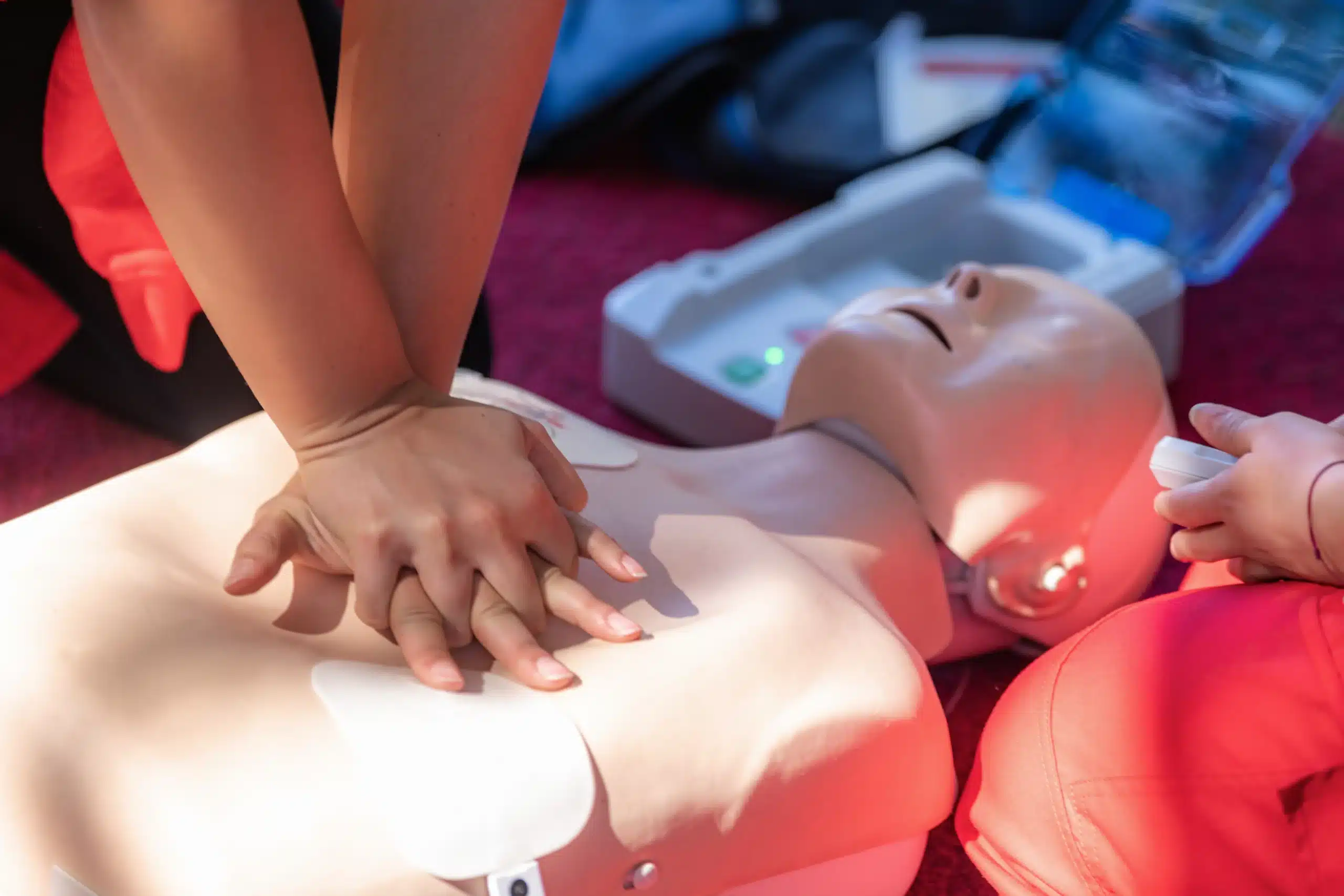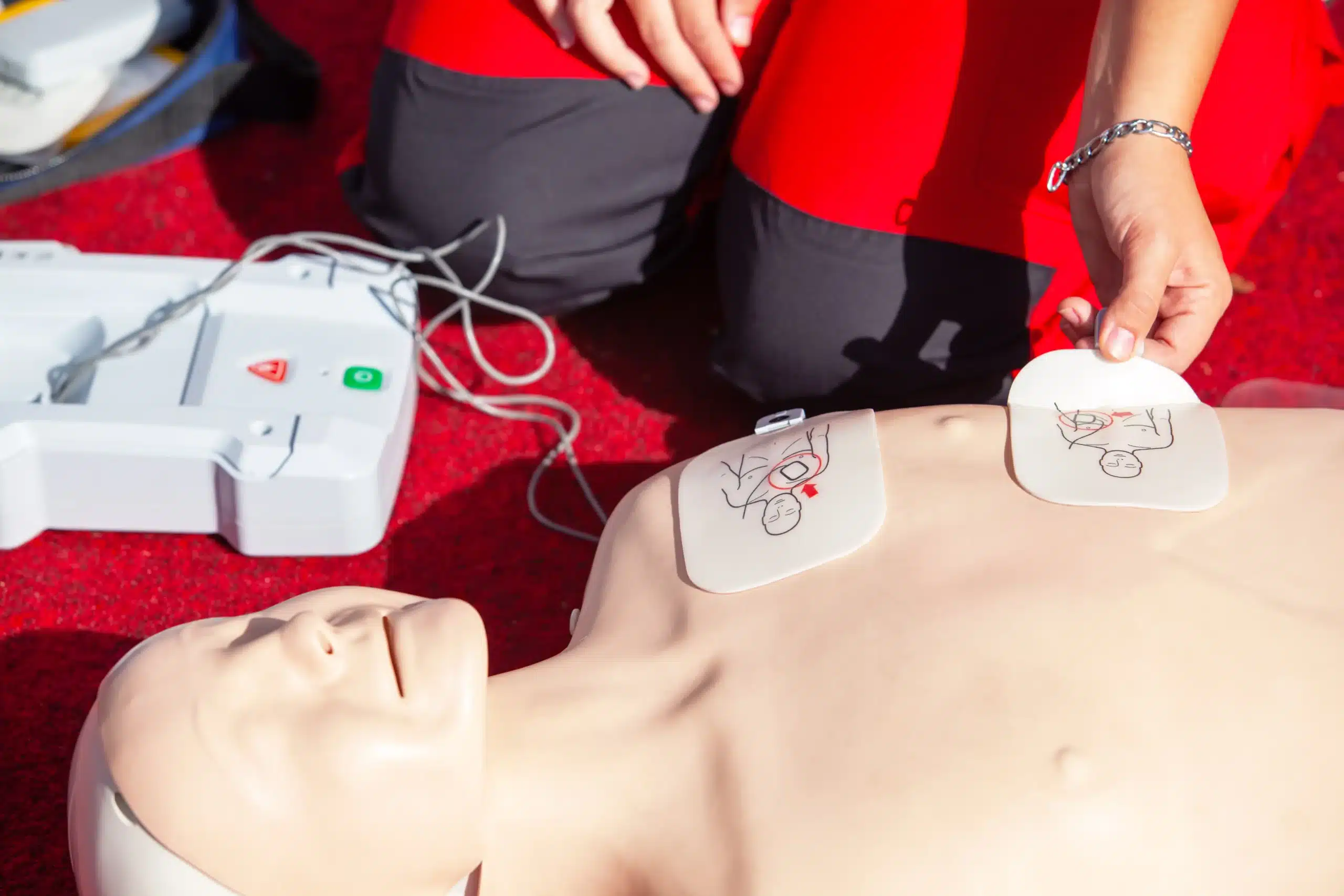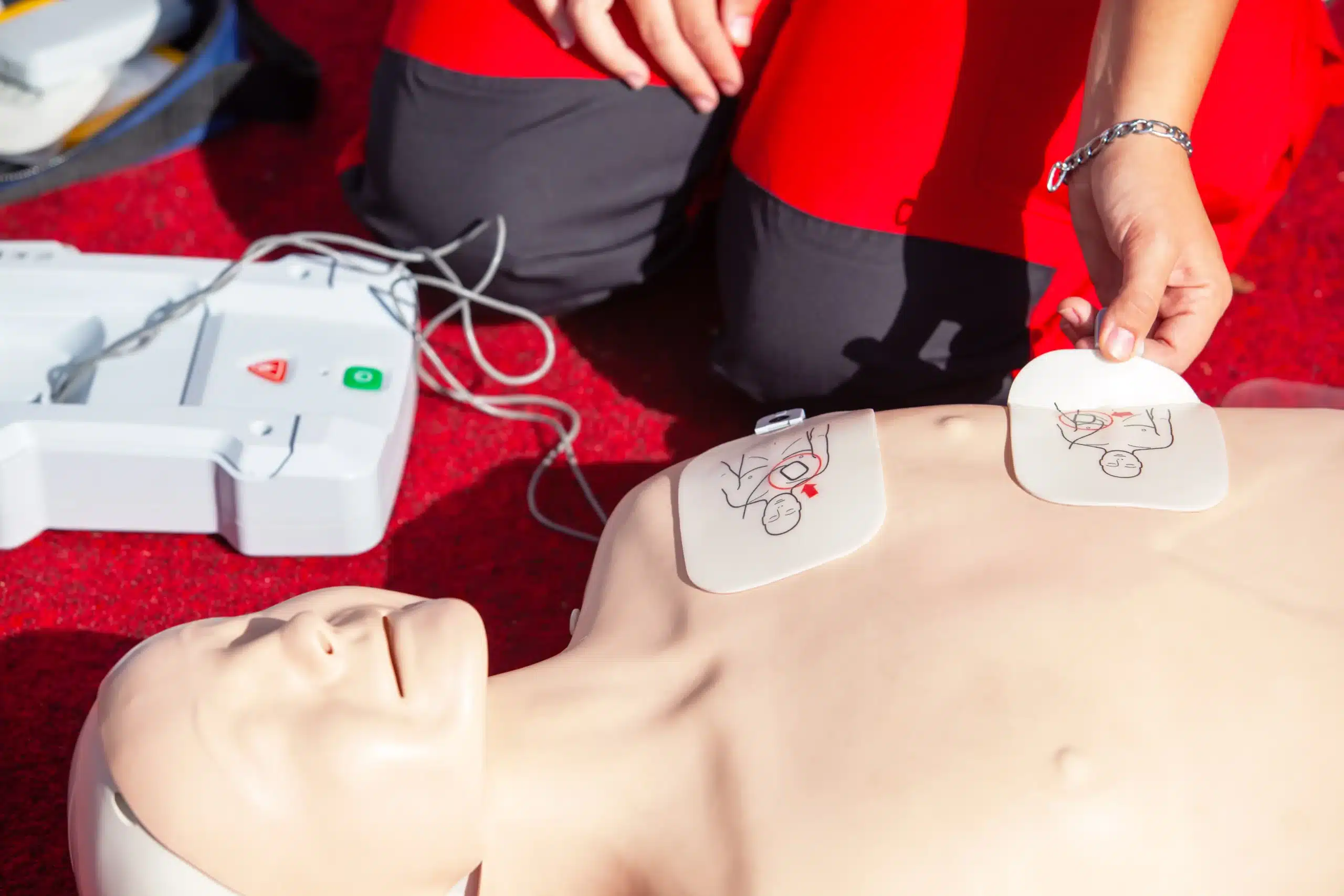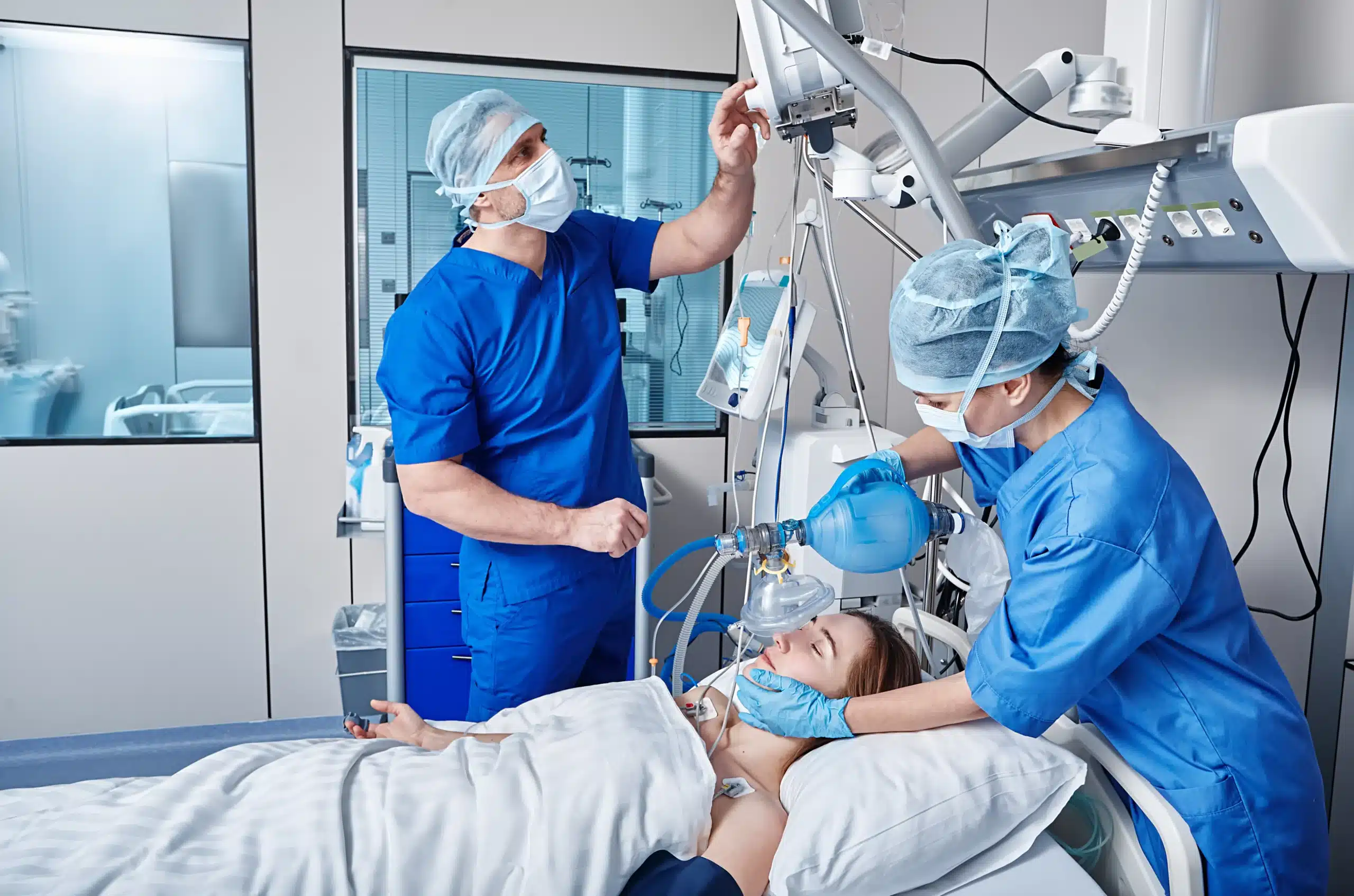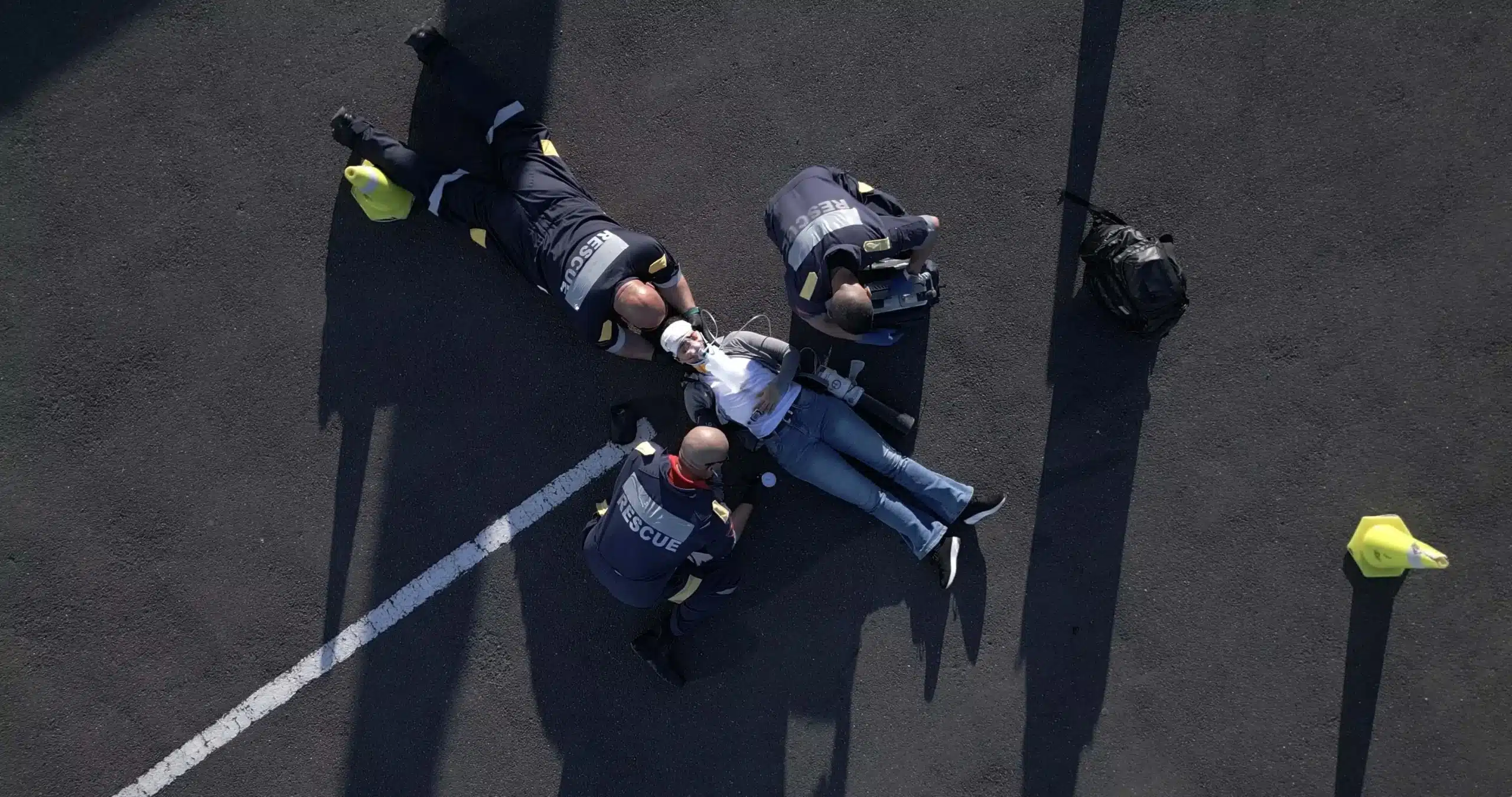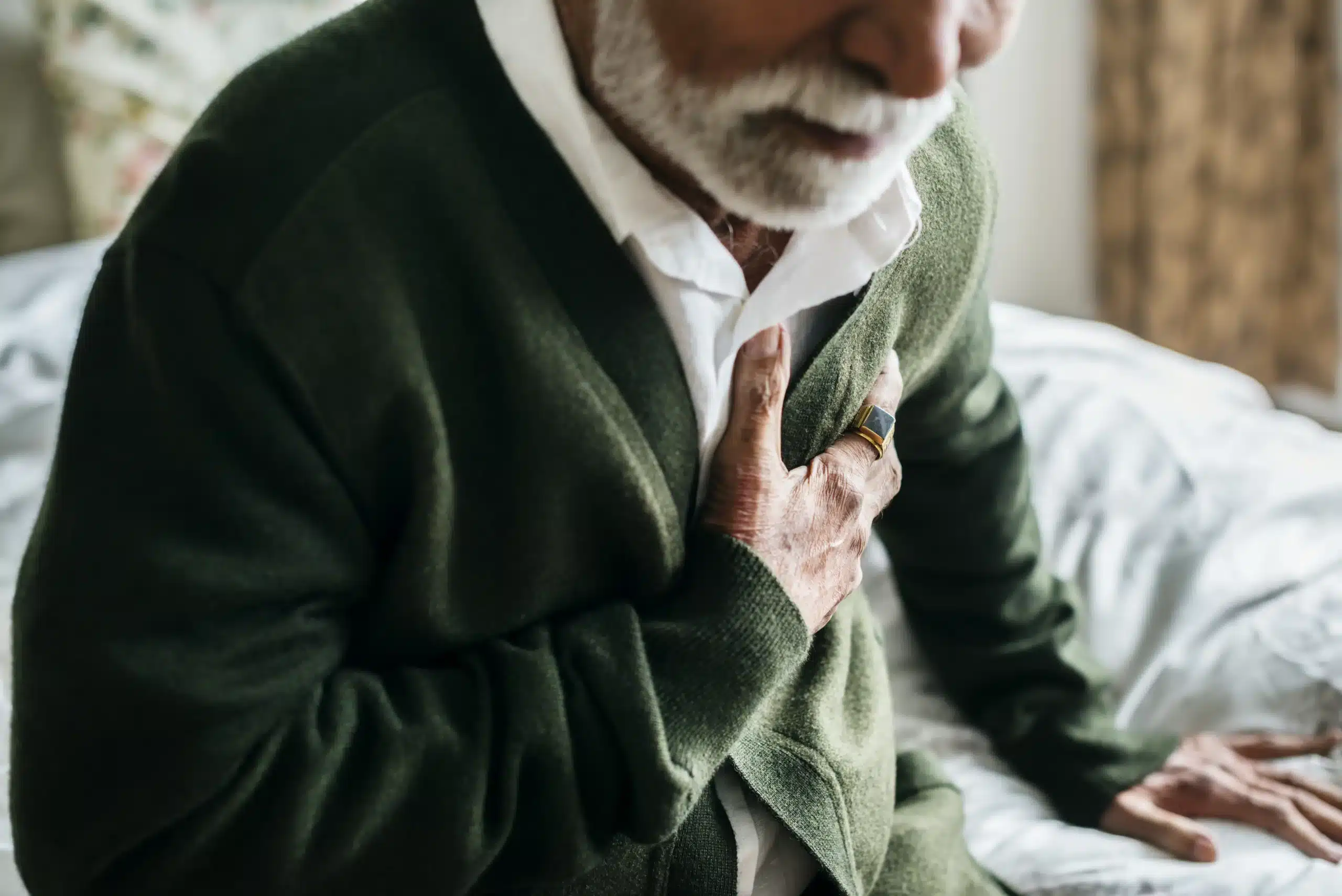Emergencies happen, and being prepared can make all the difference. CPR is a powerful skill that empowers you to respond effectively in critical situations, potentially saving a life. This guide serves as your roadmap to CPR courses in Hayward, covering everything from the fundamentals of CPR to the various certification options available. We’ll break down the different types of CPR courses, including BLS, ACLS, and PALS, and discuss the factors that influence course costs. We’ll also highlight the importance of choosing qualified instructors and explain the process of certification renewal. Plus, we’ll debunk common myths surrounding CPR training and provide practical tips to help you prepare for your course. Whether you’re a healthcare worker, a community member, or simply someone who wants to be prepared, this guide will help you find the right CPR course in Hayward.
Key Takeaways
- CPR skills empower everyone: Whether you’re a healthcare provider, a parent, or simply someone who wants to be prepared, learning CPR can make a real difference in an emergency. Find a course that suits your needs.
- Select the right CPR course: Consider your specific requirements, such as BLS, ACLS, or PALS certification, and choose a course format – online or in-person – that works best for you.
- San Leandro CPR Classes offers convenient, high-quality training: Explore their various courses, group discounts, and the streamlined RQI recertification program to maintain your life-saving skills.
What is CPR? A Guide to Courses in Hayward
Cardiopulmonary Resuscitation (CPR) is a lifesaving technique used when someone’s breathing or heartbeat stops. It involves chest compressions and rescue breaths to circulate oxygenated blood to the brain and other vital organs until professional help arrives. Learning CPR can dramatically increase the chance of survival for someone experiencing cardiac arrest or respiratory failure.
Hayward offers a variety of CPR courses, many certified by the American Heart Association. These courses teach essential skills to respond effectively in emergencies. Basic Life Support (BLS) training is a common type of CPR certification, covering techniques for adults, children, and infants. This comprehensive approach prepares you to handle various emergency situations. For a deeper dive into BLS training, explore our Hayward guide.
Hayward also offers other valuable courses like Advanced Cardiovascular Life Support (ACLS) and Pediatric Advanced Life Support (PALS), in addition to standard First Aid training. These courses provide in-depth knowledge and hands-on practice, giving you the confidence to act quickly and effectively. San Leandro CPR Classes offers a range of courses and certifications to meet your specific needs. Taking a CPR course is a crucial step towards ensuring community safety and being prepared for emergencies. Contact us to learn more about CPR classes in Hayward.
CPR Course Types
Choosing the right CPR course is the first step. Understanding the different levels and what each covers will help you find the best fit. Here’s a breakdown of common CPR courses offered in Hayward:
Basic Life Support (BLS)
The BLS course provides healthcare providers and other professionals with the skills to respond to life-threatening emergencies. It covers high-quality CPR for adults, children, and infants, along with techniques for the relief of choking and AED use. BLS certification is often a prerequisite for other advanced certifications and is essential for many healthcare roles.
Advanced Cardiovascular Life Support (ACLS)
ACLS builds upon the foundation of BLS. This course is designed for healthcare professionals who manage cardiopulmonary arrest or other cardiovascular emergencies. It covers more complex algorithms for patient care, including airway management, pharmacology, and team dynamics.
Pediatric Advanced Life Support (PALS)
PALS focuses on the specialized needs of infants and children facing respiratory or cardiovascular emergencies. This course teaches healthcare providers how to recognize and manage these emergencies effectively. Like ACLS, PALS goes beyond basic CPR and delves into more advanced life-saving techniques.
Heartsaver CPR/AED
The Heartsaver CPR/AED course is designed for anyone with limited or no medical training who wants to learn CPR and how to use an AED. This course is ideal for teachers, coaches, childcare providers, and other community members who want to be prepared to respond to emergencies.
First Aid/CPR/AED Combination
Combining first aid with CPR/AED training offers comprehensive preparedness for various emergencies. You’ll learn how to manage injuries, control bleeding, and handle other medical situations, in addition to CPR and AED use. This combined approach is valuable for anyone who wants to be fully equipped to help in an emergency.
CPR Training Costs
Knowing the cost of CPR training is an important step in choosing the right course. Several factors influence pricing, and understanding these can help you make an informed decision.
Average Course Prices
CPR course fees vary based on the type of certification you need. Basic Life Support (BLS certification) courses, for example, typically differ in price from Advanced Cardiovascular Life Support (ACLS) or Pediatric Advanced Life Support (PALS) courses. Check directly with training providers like San Leandro CPR Classes for their most up-to-date pricing. Their low price guarantee ensures competitive rates for high-quality training. You can also compare options in nearby cities like Hayward. For training in Hayward, explore CPR courses in Hayward.
Factors Affecting Price
Beyond the course type, other elements can influence the overall cost. Course format matters; in-person training often involves costs for classroom space and equipment. Location can also affect pricing, as costs can differ between regions. Instructor expertise and experience sometimes contribute to the price, as can additional materials or resources. For potential savings, consider group discounts offered by many providers.
Certification’s Long-Term Value
While the upfront cost of CPR training is important, recognize the long-term value of your certification. A CPR certification isn’t just a credential; it’s your ability to potentially save a life. This skill is invaluable, whether for healthcare professionals, childcare providers, or anyone who wants to be prepared. Certifications from organizations like the American Heart Association are typically valid for two years. San Leandro CPR Classes also offers the RQI program, which can streamline recertification. Think of your certification as an investment in your skills and community well-being. For questions or more information, contact San Leandro CPR Classes.
Instructor Qualifications
Knowing the qualifications of your CPR instructor is essential for a valuable learning experience. It ensures you receive accurate information and proper training, ultimately equipping you to confidently handle real-life emergencies. Look for instructors with robust medical backgrounds and experience in emergency response. This expertise translates to higher-quality instruction and a deeper understanding of the nuances of CPR techniques. San Leandro CPR Classes prioritizes experienced instructors committed to providing comprehensive training.
Instructor Expertise
Experienced instructors bring real-world scenarios and insights to the classroom, enriching the learning process. They can answer your specific questions and offer personalized guidance based on their practical knowledge. This personalized approach can significantly improve your comprehension and retention of lifesaving skills. Instructors who are also healthcare providers often stay up-to-date with the latest advancements in CPR techniques and guidelines, ensuring you receive the most current and effective training. CPR Education emphasizes the importance of instructor expertise in delivering high-quality CPR training.
Training Methods and Equipment
Modern CPR training often incorporates advanced tools and techniques to enhance the learning experience. Many courses utilize voice-assisted mannequins for independent skills testing, providing immediate feedback and allowing for self-paced practice. This method encourages active participation and builds confidence, while instructors remain available for support. Bay Area CPR discusses the benefits of hands-on training with modern equipment. Keep in mind that CPR training can be physically demanding. If you have any physical limitations, it’s always a good idea to discuss them with the training center beforehand. The RQI program, offered by San Leandro CPR Classes, provides a streamlined and efficient path to certification, particularly beneficial for busy medical professionals. This program leverages technology and flexible learning options to make certification more accessible.
Certification Renewal
Keeping your CPR certification current is essential for providing effective, up-to-date care. This section clarifies how long certifications last and how to renew yours.
Certification Validity
Understanding the lifespan of your certification is the first step in staying prepared. American Heart Association (AHA) certifications are valid for two years. The Red Cross offers certifications valid for either one or two years, depending on the course. This difference is important to keep in mind so you can plan your renewal accordingly and ensure you’re always equipped with the latest CPR techniques. Knowing when your certification expires helps you stay compliant and confident in your skills.
Renew Your Certification
Renewing your certification doesn’t have to be complicated. San Leandro CPR Classes offers the RQI program, a streamlined renewal process that combines online learning with in-person skills testing. This blended approach lets you learn at your own pace and then demonstrate your skills in a practical setting. You’ll receive your new certification card the same day as your skills test, leaving fully certified and ready to respond to emergencies. To prepare for your skills testing, watch the instructional videos beforehand. Being well-prepared increases your chances of successfully completing the assessment and getting recertified quickly.
Group Training & Discounts
Group CPR Training Benefits
Group CPR training is a smart choice for organizations and teams for several reasons. On-site training offers major convenience. Providers like CPR Education will often come to your location, eliminating travel time and expense for your team. Training together in a familiar environment creates a more comfortable setting, which can improve participation and focus. Because CPR training involves physical activity, it’s wise to consider everyone’s physical abilities beforehand to ensure a safe and productive training session. For example, Bay Area CPR recommends checking with participants about any physical limitations before the class.
Get Group Discounts
Training your team together can also save you money. Many CPR training providers in Hayward offer group discounts, reducing the cost per person. San Leandro CPR Classes provides group discounts and combines this with easy recertification through their RQI program. This streamlined approach makes maintaining your team’s certification and preparedness more affordable and less complicated. This is a significant benefit for any organization prioritizing employee training in these essential life-saving skills.
Choose the Right CPR Course
Choosing the right CPR course is crucial for effective emergency response. It’s a decision that depends on your individual needs and learning style. Take your time and consider these factors to ensure you find the perfect fit.
Assess Your Needs
Before you start searching for CPR classes in Hayward, think about why you need CPR certification. Are you a healthcare professional required to maintain BLS certification for your job? Or are you a parent wanting to learn basic life-saving skills for peace of mind? Perhaps you’re a teacher or childcare provider needing CPR certification to meet workplace requirements.
Different professions have different requirements. Healthcare providers, for example, typically need BLS certification, which covers more comprehensive life support techniques. Others may find the Heartsaver CPR/AED course sufficient. Clearly defining your needs is the first step in choosing the right course.
Compare Courses & Providers
Once you know what type of certification you need, compare courses and providers. Look at what each course covers. Some focus solely on CPR, while others include First Aid and AED training. Consider the American Heart Association certification courses offered by San Leandro CPR Classes, including BLS, ACLS, PALS, and First Aid. They serve residents of San Leandro, Hayward, and Union City.
Also, compare different training providers. Read reviews, check instructor qualifications, and consider the overall learning experience. Think about factors like class size, location, and scheduling flexibility. For personalized guidance, contact San Leandro CPR Classes to discuss your needs. If you’re signing up with a group, ask about group discounts. Finding the right provider can significantly impact your learning experience.
Top Hayward CPR Trainers
Finding the right CPR training can feel overwhelming. To help you, we’ve compiled a list of reputable CPR trainers in and around Hayward.
San Leandro CPR Classes
San Leandro CPR Classes offers a variety of American Heart Association certification courses, including BLS, ACLS, PALS, and First Aid. They focus on providing excellent customer service and convenient training options for those living in San Leandro, Hayward, and Union City. Plus, they offer group discounts and an innovative RQI program for expedited certification. Learn more about their courses and commitment to the community.
American Heart Association Training Centers
Safety Training Seminars provides American Heart Association BLS, ACLS, PALS, and CPR classes in Hayward. The demand for CPR and First-aid training in Hayward highlights the city’s focus on community safety and preparedness. You can find additional Training Centers on the American Heart Association website. Explore their offerings in Hayward.
Red Cross Training Facilities
The American Red Cross is a well-known provider of CPR/AED and First Aid certifications. They offer both online and in-person training courses, giving you flexibility in how you learn these essential skills. Find a Red Cross training facility near you.
Local Community Colleges
Chabot College and Ohlone College often offer CPR and First Aid courses through their community education programs. These classes can be a cost-effective way to get certified. Contact the colleges directly to learn about upcoming course schedules and registration information. Local providers like San Leandro CPR Classes also play a vital role in providing these life-saving skills. Contact them to learn more about their courses.
Prepare for Your CPR Course
Getting ready for a CPR course? Knowing what to expect and how to prepare can make a big difference in your learning experience. This section covers the basics to help you feel confident and ready to learn these lifesaving skills.
What to Expect
CPR classes blend online learning with hands-on practice. Many courses, like those offered at San Leandro CPR Classes, use a blended learning format. You’ll typically start with online coursework, often through the RQI program, before attending an in-person skills session. This approach lets you learn the material at your own pace and then focus on mastering the physical techniques during the hands-on portion. These in-person sessions involve practicing CPR techniques on mannequins, giving you realistic training. Because CPR involves physical activity like chest compressions, be prepared for some physical exertion. If you have any physical limitations, it’s always a good idea to chat with your instructor beforehand to discuss any necessary modifications. CPR Education and other providers in Hayward aim to equip residents with the skills they need to respond effectively in emergencies.
Certification Tips
Want to ace your CPR certification? Start by completing the online learning modules. Watching the videos and reviewing the materials before your in-person skills session can significantly improve your understanding and performance. Completing the pre-class work often leads to a much higher pass rate on the skills test. You’ll receive your certification card on the same day you complete your skills test, so you’ll be ready to put your new skills to use right away. The American Heart Association offers a variety of CPR courses, including Basic Life Support (BLS), to equip individuals with the knowledge and skills needed in critical situations. By preparing in advance and actively participating in your class, you’ll be well on your way to becoming a confident and capable CPR provider.
CPR Training Myths
Let’s clear up some common misconceptions about CPR training. These myths can prevent people from learning this life-saving skill, so let’s set the record straight.
Who Can Learn CPR?
One persistent myth is that CPR training is only for medical professionals. This simply isn’t true. Anyone can learn CPR—from teenagers to grandparents. CPR and First-aid classes are designed to be accessible to everyone, regardless of background or physical ability. Think of it as a community initiative, empowering individuals to help in emergencies. See our CPR course options to find the right fit.
CPR Effectiveness
Another misconception is that CPR rarely works. While CPR doesn’t always result in a full recovery, it significantly increases the chances of survival. CPR keeps oxygenated blood flowing to vital organs, buying precious time until paramedics arrive. Learning CPR can truly be the difference between life and death for someone experiencing sudden cardiac arrest. For more information on the impact of CPR, explore resources like the American Heart Association.
Online vs. In-Person Training
Finally, there’s a debate about online versus in-person CPR training. Online courses offer convenience and flexibility, allowing you to learn at your own pace. However, they often lack the hands-on practice crucial for mastering CPR techniques. In-person training provides the opportunity to practice compressions and breaths on mannequins, receive feedback from certified instructors, and ask questions. While online courses can be a good starting point, in-person training offers a more comprehensive learning experience. If you’re looking for hands-on training in the San Leandro area, consider our in-person CPR classes. If you have physical limitations and are concerned about the physical demands of in-person training, contact us to discuss accommodations.
Related Articles
- Advanced Cardiac Life Support (ACLS) Training in Hayward – San Leandro CPR Classes
- BLS Training in Hayward: Your Comprehensive Guide – San Leandro CPR Classes
- CPR Certification in San Leandro: Your Comprehensive Guide – San Leandro CPR Classes
- PALS HeartCode Hayward: Your Certification Guide – San Leandro CPR Classes
- NRP Certification Hayward: Your Complete Guide – San Leandro CPR Classes
Frequently Asked Questions
What kind of CPR training do I need?
The best type of CPR training for you depends on your specific circumstances. If you’re a healthcare provider, BLS certification is likely required. For those outside the medical field, a Heartsaver CPR/AED course might be sufficient. Consider your workplace requirements and personal goals when choosing a course. If you’re unsure, reach out to a training provider like San Leandro CPR Classes to discuss your options.
How much does CPR training cost?
CPR training costs vary depending on the course type, location, and provider. Basic CPR courses are generally less expensive than advanced certifications like ACLS or PALS. Look for providers offering group discounts or package deals that combine CPR with First Aid and AED training. Remember to weigh the cost against the invaluable skill you’re gaining – the ability to potentially save a life.
How long is a CPR certification valid?
Most CPR certifications, including those from the American Heart Association, are valid for two years. It’s essential to renew your certification before it expires to maintain your skills and credentials. Some providers offer streamlined renewal processes, like the RQI program, to make recertification easier.
What should I expect during a CPR class?
Most CPR classes use a blended learning approach, combining online coursework with in-person skills practice. Expect to complete online modules covering CPR techniques and theory before attending a hands-on session. During the in-person portion, you’ll practice on mannequins, receive feedback from instructors, and learn how to use an AED. Be prepared for some physical activity, as CPR involves chest compressions and rescue breaths.
How do I choose a reputable CPR training provider?
When selecting a CPR training provider, consider factors like instructor qualifications, course content, and available resources. Look for providers offering American Heart Association or Red Cross certified courses. Check reviews and testimonials to gauge the quality of instruction and student experience. Consider factors like class size, location, and scheduling flexibility to find a provider that meets your needs. Don’t hesitate to contact providers directly to ask questions and discuss your specific requirements.
